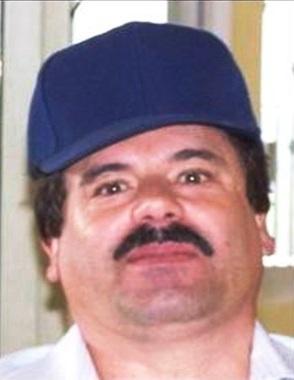Sam Quinones's Blog, page 12
July 27, 2015
The Good, the Bad and the #100Days100Nights
Twitter is abuzz with word from South Central Los Angeles that either 1) a gang, angered at the shooting of a member is planning on killing a hundred people in a hundred days or 2) that two gangs have a bet to see which can kill the most people first.
I don’t know if either story is right. I suspect no one else does, either.
There certainly have been serious spates of shootings in areas in which these gangs operate.
But to me, this seems the downside to an otherwise very positive development in our SoCal gang world. Street gangs have moved off the street. This is a radical development, for our street gangs grew from the streets, took their names from streets, developed reputations based on how well they “defended” street they deemed “theirs.”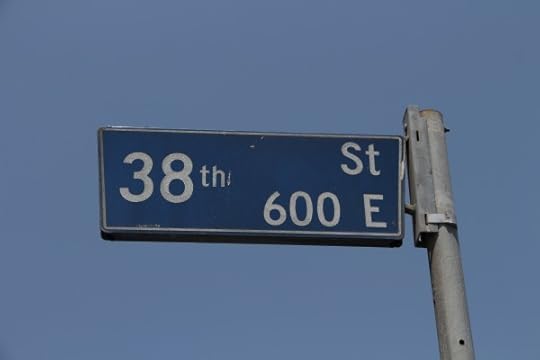
Now, in neighborhood after neighborhood, corner after corner, they are absent. Cudahy, Hawaiian Gardens, Highland Park, Compton – ancient gang towns or neighborhoods. Not any more, it seems from traveling their streets. To be sure, the phenomenon is less well felt in the black neighborhoods of South Central. But even there it’s nothing like it ever was at its worst, or even a few years after its worst.
Doesn’t mean gangs don’t feud. Doesn’t mean they’re not up to no good. It just means they aren’t as public, aren’t as much out on the street, in the parks, on the street corners – which is good, for it allows those neighborhoods some room to breathe. That’s why property values in many of these neighborhoods are rising. Northeast LA is one very good example of that.
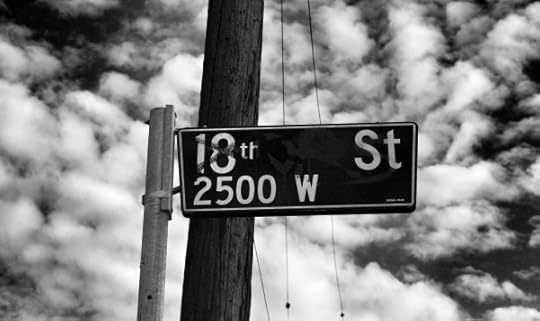 On the flipside, those who remain bonafide members, or maybe more likely those who aren’t, spend time prattling on, threatening others and boasting on social media – Facebook is full of them; so is Twitter. But going on social media requires a whole lot less dedication to the gang cause than staking out territory at a park or liquor store where your rivals know where to find you.
On the flipside, those who remain bonafide members, or maybe more likely those who aren’t, spend time prattling on, threatening others and boasting on social media – Facebook is full of them; so is Twitter. But going on social media requires a whole lot less dedication to the gang cause than staking out territory at a park or liquor store where your rivals know where to find you.
That doesn’t mean, of course, that gangs on social media is a benign thing.
Take the #100days100nights hashtag. Could be there’s truth to this hashtag. Could be there isn’t. Could be that people believe there is and act accordingly, by staying away from the areas where these gangs operate (Imperial to Florence, around Western). But it grows from the new space that gangs here have occupied, which is the virtual space. From there, the supposition is, it has spilled out onto the streets.
Whatever the truths, it bears mention that myths and misunderstandings have long fueled gang life in L.A. The Mexican Mafia, in an attempt to stop drive-by shootings, which it viewed as harmful to its drug business, said a member’s child had been killed in a drive-by. Latino gangs took that seriously.
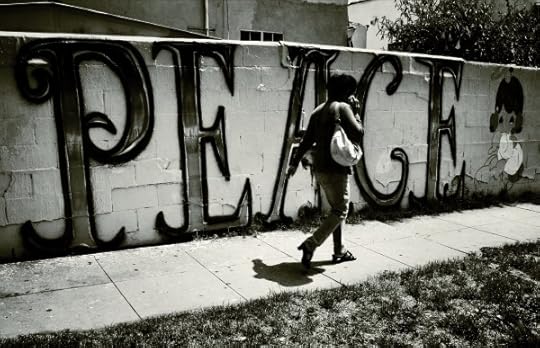 Among the Florencia 13 gang (one of the largest Latino gangs in SoCal) rumor circulated that blacks had hijacked a load of dope that belonged to the Mexican Mafia member from Florencia.
Among the Florencia 13 gang (one of the largest Latino gangs in SoCal) rumor circulated that blacks had hijacked a load of dope that belonged to the Mexican Mafia member from Florencia.
True? Who knows?
But Florencia then went on a multi-year campaign (2004-07 more or less) to shoot black men – crimes well documented in a federal trial a few years later.
So this hashtag is part of a tradition, just amplified by the power of, and lack of accountability inherent in, social media.
The post The Good, the Bad and the #100Days100Nights appeared first on True Tales: a Reporter's Blog.
July 19, 2015
Heroin & Hyperconsumption – A Poem
Ever since beginning work on my book, Dreamland, I’ve been struck by the way opiates isolate those addicted to them.
As I wrote and researched, they grew into a metaphor for modern American life.
Opiate addiction, seems to me, is some kind of final expression of our own destruction of community, our lack of connection across the country – both in poor communities and wealthy ones. 
We exalt consumption and the individual over community and have for a long time now.
These drugs seem to fit that; they turn everyone who abuses them into self-absorbed, lonely hyper-consumers.
The poem below was written by Andrew Smith, one of the thousands of Americans who died in 2014 of a heroin overdose. He was 24.
His mother, Margie Borth, discovered it after his death.
“There were several writings, this one is about scoring heroin and the lonely world that became his life,” she wrote, sending me the poem. “His brilliance still shines in his dark, sad words. His best friend described this as `hauntingly beautiful.’ I knew nothing of his addiction until just five weeks before he died. I was in a blur of grief when I first read it. But now I do see the beauty of his writing. I miss him so much, just like the thousands of other parents who are thrown into this nightmare. “
Simulate the Static
by Andrew Smith
____
The waiting, oh god
The waiting
The parking lots, the bathrooms, the empty parks that close after dark
The driveways, the bus stops, the car backseats
The posh bank lobbies, flea bag motel rooms, gas station pumps
Oak trees, palms, and retention ponds meant to beautify
The ditches, the swamps, and one off dead roads that lead to nowhere
And the loneliness of that trap.
The broken windows,
The made for TV dinners
The busted speakers blaring bass on a burner cell phone
The children going hungry, ignored in the corner
Staring at a broken television; simulating static.
The characters
The hangers-on, the worn out, the washed up
The good, the bad, the ugly
and the pretty young white girls with the blank eyes
Staring in awe at this newfound world.
The sun is setting and it’s starting to rain
My eyes are closed and I’m wishing I’m somewhere else.
When I hear a tap on my passenger window
Within 30 seconds, he’s gone
And the wait seems like a thousand centuries ago.
In this moment, I rest my eyes a second
Breathe a sigh of relief and know that all is right with the world
At least for these brief few hours.
The rain falls and my windows are up
It casts shadows across the dashboard
And the radio plays a news story
From a country whose language I do not speak
And a land I do not know.
Life is a quest
And we all search for something:
Money, fame, power, an identity.
For most they never find it;
And like a mirage in the desert,
it wavers in allure on their weary walk forward.
For others, they do.
And what’s worse,
They’re left in the emptiness of what it means.
But in this moment a fleeting comfort comes to me
And I know I’m not alone.
(Feb 2014)
The post Heroin & Hyperconsumption – A Poem appeared first on True Tales: a Reporter's Blog.
July 12, 2015
El Corrido Del Chapo (the first) – copyright mine!
The news today that Joaquin “El Chapo” Guzman escaped from Mexico’s maximum security prison either makes you  laugh or cry – both. His capture in 2014 was greeted as a sign that the country had turned away from its history of shoddy, corrupt criminal justice, and toward something more modern. President Enrique Pena Nieto got his picture on the cover of Time Magazine.
laugh or cry – both. His capture in 2014 was greeted as a sign that the country had turned away from its history of shoddy, corrupt criminal justice, and toward something more modern. President Enrique Pena Nieto got his picture on the cover of Time Magazine.
So Guzman’s escape is all the more dismal. This was Chapo’s second escape – the first coming in 2001 in a prison laundry basket.
This time, he used what appears to be a tunnel that ran from an out building under construction a mile from the prison to exactly under his cell. Talk about precision!
All you can do is make jokes about it. With my long interest in the corrido, I offer this, the first (post-escape) Corrido to Chapo Guzman.
EL CORRIDO DEL CHAPO
Voy a cantarles un corrido
De un hombre muy chaparro
Pero con amigos altos y eternos
que prefieren el despilfarro.
___
Lo habian agarrado en Sinaloa
En el mes de Febrero.
Dijo, al ver su celda,
Este un solo un hotel de paso.
___
No querian extraditarlo
Segun por interes de nacion
Aunque dijeron voces
Que fue por otra razon.
___
Se sintieron muy complacidos.
Hasta los gringos en el norte
Se dijeron muy agradecidos.
___
Pero en una celda del Altiplano
El hombre diminutivo se comentaba
`Prefiero los mariscos de Sinaloa
Y las chicas bien estructuradas.’
___
A pesar de su estatura
Su celda no le cabia.
Necesito metralleta y mujeres
Asi que busco otra alternativa.
___
Les agradezco su hospitalidad
Pero ya tengo que volar
Por un tunel de mi amigos
Muy conveniente su ayudar.
___
Vuela, vuela Chaparrito
Al avion que te va a esperar
Por un tunel iluminado
En el cual un hombre se puede parar.
___
Al entrar en el tunel
Que aparecio de milagro
Se topa con una motocicleta
Que alguien habia dejado.
___
O, que suerte, dice El Chapo
Voy hacia mi destino.
Dios y los angeles me cantan
Tambien los pajaros en los pinos.
___
Pronto El Chapo prende la moto
Y con una pluma en la mano
Escribe a sus altos amigos
Mi libertad no sera en vano.
___
Deja atras un solo libro
De los mejores, segun opiniones,
Que habla de Malverde y Chalino
Escrito por Sr. Samuel Quinones.
___
Este Quinones si tiene talento,
En el libro de Malverde y Chalino
Inscribe El Chapo muy cuidadito,
Lee bien lo dice este gringo.
___
Dice El Chapo al salir
Busquemos otro panorama
Faltaba alla aire condicionado
Aunque si me gustaba banar.
___
Amigo de los amigos
Altos y guapos, al parecer.
El Chapo si salio fuera
No se sabe donde va a amanecer.
___
Vuela vuela chaparrito
Aunque por segunda vez
A ver si nos vemos mas tarde
Ahi donde comen el pez.
___
Aqui termino mi primer corrido
De la historia de un hombre
Y sus amigos importantes
Que por cortesia lo dejaron libre.
The post El Corrido Del Chapo (the first) – copyright mine! appeared first on True Tales: a Reporter's Blog.
July 9, 2015
`Two are better than one’ … Why heroin now?
“Two are better than one … for if they fall, the one will lift up his fellow; but woe to him that is alone when he falleth, for he hath not another to help him up.” King Solomon
Those who know me will find it strange to read me quoting the Bible. 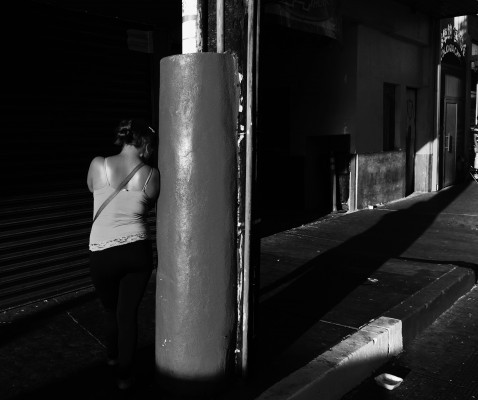
But these words, which I just read for the first time, talk about what we’ve lost and what has tenderized the country for widespread heroin and pain-pill addiction described by the CDC/DEA in my blogpost below.
We are an enormous country too often isolated, siloed in our rooms/phones/cars alone.
The magnificent ethos of self-reliance that began this country has decayed into one that holds that the individual is always superior to community – though self-reliance was only made possible by assets the community provides.
It holds that the private sector is efficient and government cloddish. It holds the free market as a kind of God, infallible.
It holds that every tax dollar will be wasted by government, so we starve it and make sure it cannot provide the basis for community that is its natural role. Yet mediocrity in business is to be rewarded with towering compensation, and part of that is that we’ll look the other way as it destroys jobs that sustain our communities.
And this reigning ethos further insists that consumption, and by extension the avoidance of discomfort and the eternal search for convenience, is our point on earth.
In such a world, naturally legions of people dose themselves on substances that numb pain – drugs that turn everyone addicted to them into hyperconsumers, self-absorbed and alone, and with no one to help them when they fall.
The post `Two are better than one’ … Why heroin now? appeared first on True Tales: a Reporter's Blog.
July 7, 2015
DEA: Heroin now increasing everywhere in America
The DEA today issued a press release that begins like this: “Heroin use has increased across the United States among men and women, most age groups, and all income levels. The greatest increases have occurred in groups with historically lower rates of heroin use, including women and people with private insurance and higher incomes.”
The release discusses a new report by the FDA and CDC about heroin’s use across the country.
The only fact it appears to leave out is that almost all the new addicts are white.
Still, for a long time, heroin has seemed to me a way of talking about America.
One reason for that is what the DEA expresses – that heroin is so widespread and in areas and populations that never knew it.
But heroin is also a way of talking about our loss of community and publicly shared assets – streets, parks, etc. Of a retreat indoors, figuratively and literally.
I believe heroin is the final expression, the final extension of our multi-decade exaltation of the free market, the individual and consumption. How else to view a drug that turns everyone addicted to it into self-absorbed hyperconsumers?
That’s why I wrote Dreamland and didn’t have one addict shooting up. To do so would have been to distract from the larger point, that this drug thrives in areas without much community feel, community anchor – the area could be poor, could be wealthy. What they share is a lack of community and public interaction and encounter.
The post DEA: Heroin now increasing everywhere in America appeared first on True Tales: a Reporter's Blog.
June 18, 2015
What’s left to say about mass murder
In my reporting career, I have covered seven American mass murders – one in 1989 in Stockton, and the rest in the last decade.
One was a guy parking his SUV in front of a commuter train (25 dead). The rest were committed with guns, usually by  deranged drifting people – all men, five of them white – who had remarkably easy access to high-powered guns.
deranged drifting people – all men, five of them white – who had remarkably easy access to high-powered guns.
I don’t know what more there is to say about these events. Seriously. They’re now so common that they have devolved into fodder for our politico-cultural wars on the toxic battlefield of 24-hour cable news. Such a network, I suspect, could plan its profitability around the certainty of a boost in viewership from a couple of these events every year.
We talked a lot but did nothing meaningful after Tucson or Aurora. Then 26 kids were shot to death at an elementary school and we did nothing. We did talk a lot, though.
People say profound things that have devolved into cliches from overuse.
“Our thoughts and prayers go out …” That’s a deep, poetic thing to say – that my thoughts and prayers I’m sending out in hopes they will soothe you and bind your wounds, that I am feeling for you and hope that in doing so it will lessen your pain. Yet it sounds trite any more.
I used to think that seven mass murders was a large number of mass murders to have covered in one’s career.
Now another lost and drifting lunatic kills nine people in a church. A guy who by 21 is going nowhere, who apparently at one point had been abusing Suboxone (a heroin-addiction treatment). This time the guy has a racial animus.
Terrorist? I guess. Probably. Who knows?
“He looks bored,” one little girl I know said, upon seeing his mugshot. That’s sounds about right.His dad, bugging him to get a job, gave him a gun for a 21st birthday present. Who does that? And why? To give him some direction in life? I don’t have the slightest idea why someone would do that.
I don’t know what to say any more about people who do these killings, or legislators who won’t do anything about these events, or 24-hour cable news babble, or dads who give their lost sons guns for presents, or a country that so easily moves on.
The post What’s left to say about mass murder appeared first on True Tales: a Reporter's Blog.
May 27, 2015
That NY Heroin
The seizure totaled 154 pounds (and $2 million in cash), the largest ever in that city – larger even than the legendary French Connection bust of the 1970s (100+ pounds). Which is saying something, as New York was the U.S. heroin hub for most of the last century.
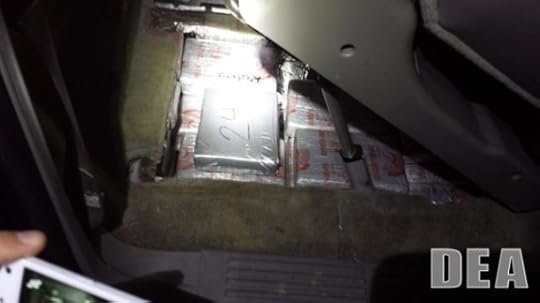
I was surprised to see the traffickers were from Mexico. Virtually all the heroin coming into NYC and New England has been, since the 1980s, from Colombia – that’s what I understood.
So I reached out to a law enforcement source in the NYC metro region who works heroin. The source said that while the traffickers were Mexicans, the heroin was from Colombia: “Colombians have almost totally removed themselves from the distribution directly in the US.”
This is because:
“1. Colombian communities have matured and the criminal elements have for the large part been killed, jailed or been deported.
2. The Colombian drug-trafficking organizations (DTOs) can make money still selling it to other DTO’s in Colombia and/or in Mexico and parts nearby without the fear of the long arms of US authorities. Example: If they sell to Mex DTO they make $5,000 with minimal exposure. If they sell in US directly they make $10,000, but with possible major problems.
3. For Colombians, they can make major profits if they can get it to Western Africa and/or Europe with less exposure.
4. In today’s world, post 09/11, the Achilles Heel entry point into the US is over the southwest border. That area is within the realm of the Mex DTO’s. The Colombians feel they have more control if they conduct business in their area of operation and have less problems.”
All of which is to say that what happened to cocaine in the late 1980s – Mexican DTOs took over the trade from Colombians and, fueled by those profits, began the growth into the organizations they are today – is now happening with heroin as well.
If that’s so, it’s likely there’ll be more busts like this one, given the nationwide demand nowadays for the drug generated by widespread addiction to opiate painkillers.
LINKS: #Dreamland
New York Post story
DEA Link
Vice News
Photo: DEA
The post That NY Heroin appeared first on True Tales: a Reporter's Blog.
May 22, 2015
Hillary Clinton, Heroin, and the Time to be Heard
Three weeks ago, Hillary Clinton’s health-policy advisor called me to discuss the opiate epidemic, its causes and what could be done about it.
The advisor said she was reading my book, Dreamland, and that Mrs. Clinton had read my NY Times op-ed column of April 19 about the issue.
The advisor told me Mrs. Clinton had been hearing a lot of very passionate comments from parents with addicted children as she campaigned in Iowa and New Hampshire.
We spent an hour on the phone, talking about policy, about pain pills, pill mills, Mexican heroin trafficking, and about the quiet surrounding this epidemic that had allowed it to spread.
So I’m glad to see that Mrs. Clinton is now coming up with policy proposals to address it, one of which is to begin talking about it and end the stigma and silence surrounding addiction.
This epidemic is neither a red nor a blue issue. Thus I hope candidates from both parties will respond as well. I’ll be happy to chat with them, if they want to call.
I’d hope, moreover, they would focus not only on heroin, but on the broader problem of overprescribing of opiate painkillers, which so often provide the gateway to heroin. (Pain pills have their legitimate role in medicine, but too often are massively and unnecessarily prescribed.)
But there’s another important point in this. I believe parents of addicted children need to use this approaching presidential campaign as a way of magnifying their voices.
As a longtime journalist, I know that the most poignant stories are the ones that can have the most impact. Sadly, many parents up to now have kept silent, ashamed or simply worn out by their children’s addiction.
That is changing. More are stepping forward, as Mrs. Clinton was hearing on the campaign. Some are mentioning heroin overdose as a cause of death in their children’s obituaries – an act of enormous, and necessary, courage.
But these stories are still not being heard the way they need to be.
During past drug scourges, public violence aroused public ire. The crack years, for example, saw drive-by shootings and carjackings. I was a crime reporter during those years and saw this first hand.
None of that public violence has happened during this epidemic. So the job of arousing public attention falls almost entirely to parents.
I believe this presidential campaign offers an opportunity to be heard, to magnify voices. Make opiate abuse (pain pills and heroin) and overprescribing a point of presidential debate.
To do that, parents in particular need to step forward and tell their stories the way no one else can.
Photo: Hillary For President website
The post Hillary Clinton, Heroin, and the Time to be Heard appeared first on True Tales: a Reporter's Blog.
May 16, 2015
William Zinsser Dies
William Zinsser, who wrote On Writing Well, has died. He was 92, according to his NY Times obituary.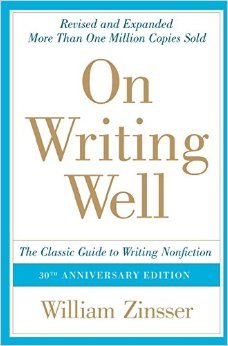
His book influenced me enormously. We learn to write by writing, but if there’s one book to read on writing in English, it’s his. I read it probably eight times, though I’ve lost count. Some parts of it, more than that.
His approach to writing is the correct one – that writing involves rewriting and more rewriting, each time with an eye to cutting words that don’t need to be there.
That through rewriting we achieve greater clarity, and come to know what we think.
He didn’t mean that all sentences should be short. Rather, that all sentences contain only words that are necessary. Same goes for sentences in a paragraph and paragraphs in a text.
He also said that if you pare down your prose to only what’s necessary and do this over and over, through a lifetime, you develop your own voice. That idea hit me as strange at first, but I know now that he was right.
His point, too, that writing is not to be done when you have inspiration, but treated as a job, something you get up and do every day – that was a revelation to me, as well. The anecdote with which he opens the book, about speaking on a writing panel with a doctor, is fabulous.
On Writing Well went through many editions, but the core of it – the first six or so chapters – remains always clear and relevant.
His essay on Clutter in language is probably more on point today than ever.
I wrote to him twice – once after my first book came out and the second time after we published the first Tell Your True Tale: East Los Angeles volume. Each time, he was kind enough to write back.
A good guy who changed English – by making those who write it do it more clearly.
Many thanks, Mr. Zinsser.
The post William Zinsser Dies appeared first on True Tales: a Reporter's Blog.
May 14, 2015
Remembering Dreamland: One woman’s story
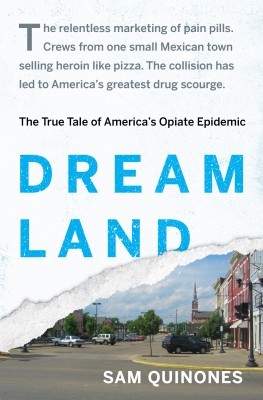
In reality, the title refers to an enormous pool that existed years ago in Portsmouth, Ohio, a town mightily afflicted by opiate addiction. Dreamland was the town square, in a sense. Life revolved around it. Kids grew up in public, under the watchful eye of hundreds of parents. It was a place where everyone was equal in bathing suits. The pool embodied the feel of community.
I’m still awed by the letters I continue to get in response to the book. Here’s another …
____
I grew up in Portsmouth, born in 1952. It was a safe blessed time in post war America. I had 6 cousins in my Catholic school class, picnics with the families on weekends, a perfect childhood of Dreamland every summer day, walking home from school with friends each fall, enduring the brief winter to count the days until Dreamland reopened.
I left after high school and did college at Ohio Wesleyan where my husband and I met. We moved to PA and I did law school as my husband served the United Methodist churches of Central PA. We made semi-annual trips to Portsmouth with our three children to see family. Each time we went, the town was more depressing. Family members became drug addicts. We were stolen from at my mothers funeral. I rescued my dad from a nursing home where the facility clearly had users on staff. This was in 2013. He was not safe in his own home due to a family member selling drugs right under my
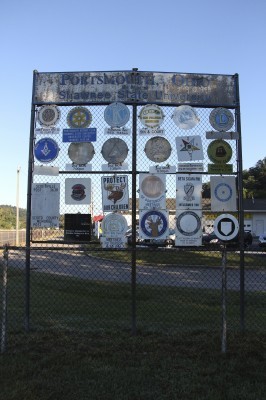 dad’s nose.
dad’s nose.He died in 2014, in PA, after having lived 92 years in Portsmouth. He knew Branch Rickey, Rocky Nelson, and the great years of Portsmouth. 4 of his six brothers served our country; my dad was deferred due to problems after having polio and rheumatic fever. I have Ohio River blood in my veins.
Thank you for making me understand a bit more that the addictions which decimated my family were not totally their fault. I worked 35 years as an attorney in health care law and I knew the power of the pharmaceutical companies and the collision of profit in healthcare.
If you would like to take on another pharmaceutical issue in the future, let me suggest Lyrica. It was presented as the holy grail for nerve pain. I am no longer practicing law as I had to quit due to seizures after using Lyrica. Facebook even has a Lyrica survivors page of which I am a member. It is another sad tail of “big pharma” all over again.
Thank you again for your wonderful work of Dreamland.
Barbara G. Graybill
The post Remembering Dreamland: One woman’s story appeared first on True Tales: a Reporter's Blog.

